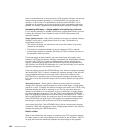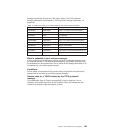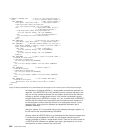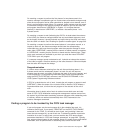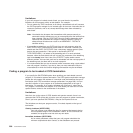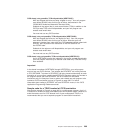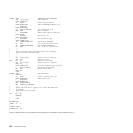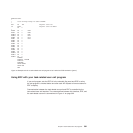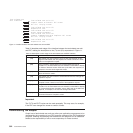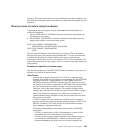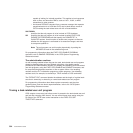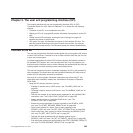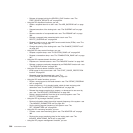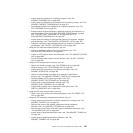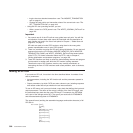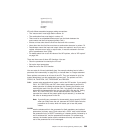
Table 16 describes each stage of the interface between the task-related user exit
and EDF, relating the descriptions to the (Tn) and (En) expressions in Figure 11.
Table 16. Description of each stage of the task-related user exit/EDF interface
Invocation Description
(T1) Task-related user exit invoked to set up its EDF requirements. At this
stage the task-related user exit prepares the “About to Execute” screen
based on the application request.
(E1) Using information passed back from the task-related user exit at
invocation T1, the task-related user exit interface invokes EDF to display
the “About to Execute” screen. EDF sets up the EDF user response, for
example, if the user has changed the screen.
(T2) Task-related user exit is invoked with the EDF user response to the
“About to Execute” screen.
(T3) Task-related user exit invoked to access external resource manager for
application request.
(T4) Task-related user exit invoked to prepare a “Command Execution
Complete” screen, based on the result of the application request.
(E2) Using information passed back from the task-related user exit at
invocation T4, the task-related user exit interface invokes EDF to display
the “Command Execution Complete” screen. EDF sets up the EDF user
response, for example, if the user has changed the screen.
(T5) Task-related user exit is invoked with the EDF user response to the
“Command Execution Complete” screen.
Important
The E1/T2 and E2/T5 cycles can be used repeatedly. This may occur, for example,
if the EDF user changes the screen a number of times.
Administering the adapter
Careful use of task-related user exits can allow your application programmers to be
unaffected by the invocation of non-CICS resource managers from CICS application
programs. Enabling and disabling task-related user exit programs for an installation
should be the responsibility of one or more supervisory or master terminal
Task-related user
exit interface Task-related user exit (T1)
Prepare 'About to Execute' EDF screen
EDF (E1) Display screen
Task-related user exit (T2)
Response EDF user
Task-related user exit (T3)
Access resource manager
Task-related user exit (T4)
Prepare 'Command Execution Complete' EDF screen
EDF (E2) Display screen
Task-related user exit (T5)
Response EDF user
Figure 11. Interface between the task-related user exit and EDF
302 Customization Guide



